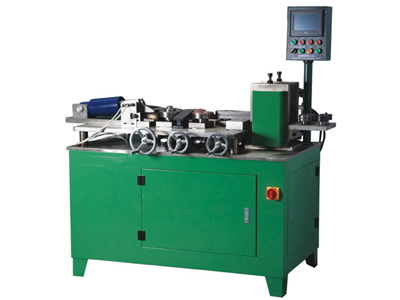Spiral wound gaskets are an essential component in many industries, such as chemical, oil and gas, and pharmaceuticals. To integrate these gaskets seamlessly into existing production lines, efficient and reliable machines are necessary.
Machines For Spiral Wound Gaskets automate the process, improving productivity and minimizing errors, resulting in high-quality gaskets.

What are spiral wound gaskets?
Spiral wound gaskets are a type of sealing element that has a V-shaped or W-shaped profile with metal and soft filler material. They are designed to withstand fluctuations in temperature and pressure while maintaining their sealing capabilities. These gaskets are used primarily in equipment that handles steam, gas, oil, and chemicals.
Why is it essential to integrate machines in existing production lines for spiral wound gaskets?
Integrating machines into the production line for spiral wound gaskets can provide consistent and uniform gaskets, eliminate wastage and improve efficiency, and save time. It also reduces the potential errors and human intervention. As the demand for spiral wound gaskets increases, it is essential to integrate machines to streamline the production process.
What are the factors to consider when integrating machines for spiral wound gaskets?
Several factors must be considered when integrating machines for spiral wound gaskets, such as the type of material used for the gaskets' metal and filler; whether the production line requires custom or standard gaskets; the machine's capacity to fabricate the gaskets in various sizes, flexibility, and customization requirements.
How can you select the right machine for spiral wound gaskets?
Choosing the right machine for spiral wound gaskets can be overwhelming. Hence it is essential to understand the production volume, the materials used, and customizations required before making a decision. Always evaluate the machines' capacity, the quality and performance of it, and the after-sale support provided by the manufacturer.
Conclusion
In conclusion, integrating machines for spiral wound gaskets in existing production lines is critical to streamline the production process and increase efficiency. The selection of the right machines plays a significant role in ensuring the production of high-quality gaskets that meet customizations and market needs.
Ningbo Kaxite Sealing Materials Co., Ltd. is a leading manufacturer and supplier of sealing materials that include spiral wound gaskets machines. Our team of experts design and manufacture efficient machines that can fabricate custom and standard gaskets with high-performance, reliability, and safety. Contact us at
kaxite@seal-china.com to know more about our machines and other sealing solutions.
Scientific research papers to know more about spiral wound gaskets:
1. Alexander, D. (2012). Spiral wound gaskets: development and applications. Journal of Fluids Engineering, 134(1), 011104.
2. Johnson, K. L. (2016). Contact mechanics and the design of spiral wound gaskets. Journal of Applied Mechanics, 83(10), 101007.
3. Mason, J. P. (2018). Using spiral wound gaskets in the detection of leaks in pipelines. Journal of Loss Prevention in the Process Industries, 53, 59-64.
4. Neilson, J. (2013). Analysis of the pressure distribution in a spiral wound gasket. Journal of Engineering, 7(3), 80-85.
5. Shimanovich, S. (2019). The effectiveness of the spiral wound gasket's material for sealing performance. International Journal of Mechanical and Materials Engineering, 14(1), 2.
6. Wu, Q., & Bai, Y. (2017). An experimental investigation of the sealing performance of a spiral wound gasket. Journal of Applied Fluid Mechanics, 10(6), 1789-1796.
7. Yildirim, M. (2014). A comparative analysis of spiral wound gaskets and other sealing elements for heat exchangers. Energy Conversion and Management, 79, 511-517.
8. Zawilski, B. (2015). The effect of gasket thickness and metallic material on the tightness of a spiral wound gasket. Machine Dynamics Problems, 34(3), 25-31.
9. Ma, H., & Zhou, J. (2019). A new method of predicting the leakage of spiral wound gaskets based on wavelet decomposition. Measurement, 151, 107-117.
10. Li, J., & Chen, Q. (2016). Finite element analysis of a spiral wound gasket under compressive load. Journal of Computational and Theoretical Nanoscience, 13(9), 6333-6340.
